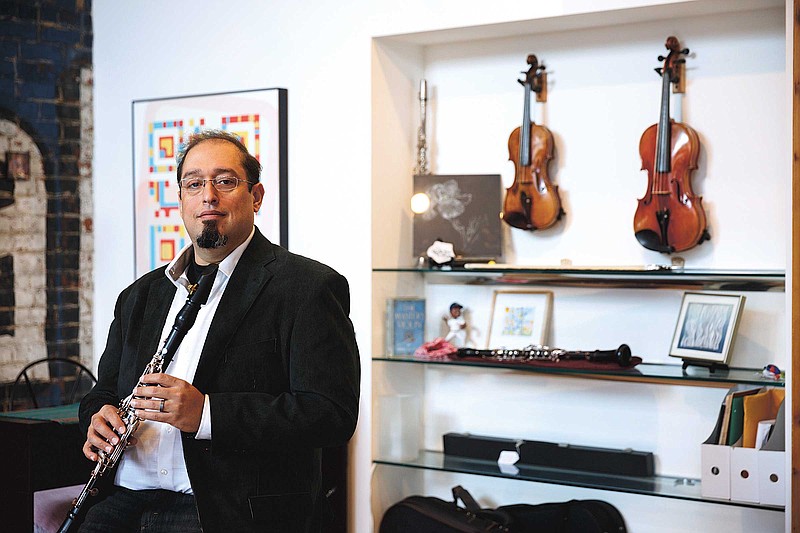More Info
SOUTHSIDE STRINGSFounded: 2015About the founder: David D. Dunn, 41, is a clarinetist who teaches music. A recent New York transplant (his wife, Bryony Stroud-Watson, a violinist, has Chattanooga ties), he has a woodwind studio, Southside Studio in the city’s Southside neighborhood. He’s also a sommelier, has a yoga teaching certification and considers himself an “inter-disciplinary artist.” His bio notes that he’s a graduate of the Ethical Culture Fieldston School and attended the Hoff-Barthelson Music School, both in New York. He received a bachelor’s degree in music in clarinet performance from the Hartt School at the University of Hartford in Connecticut and has a master’s degree in music in clarinet performance from Rutgers University.About the company: Southside Strings won the best music and entertainment category during Co.Lab’s Will This Float competition in December. The company aims to build strings instruments using CNC woodworking technology. Production and design is planned to be in Southside Studio.Looking for investors: Dunn needs $25,000 to $30,000 to pay for a CNC wood-milling machine and software for it, and to contract initial help from designers in the 3D-modeling community. He has not yet needed to put any money into the company.Contact: d@southsidestrings.com or Twitter: @SoSideStrings
David D. Dunn’s musical instrument of choice, the clarinet, gets updated regularly.
“I’m used to a new look, all the time,” says Dunn, 41, a music teacher who lives in Chattanooga’s Southside. “It sparks an excitement. I want to bring that same level of excitement and curiosity to the string world.”
Dunn’s fledgling company, Southside Strings, could bring about buzz by using 3D modeling and CNC technology. His startup won the music and entertainment category of Co.Lab’s Will This Float competition in December.
Dunn says he’s made several guitars and ukeleles by hand. That’s one way to create novel string instruments. But carving by hand isn’t efficient, he says.
“I don’t feel super romantic about spending weeks on end doing that,” Dunn says. “I want to see the instruments in the hands of the musicians. If someone orders an instrument I want to be able to send it to them in a week.”
To be sure, factory-made string instruments already put 3D modeling to use. But they don’t offer customization that Dunn wants to offer.
“I really don’t feel they are exploring the details that are possible … or choices of varnish,” he says. “There’s no reason why we can’t mix and match, or take a new approach to the actual aesthetic.”
He hopes to offer less traditional types of wood too. Dunn acknowledges that non-traditional wood types could change the sound of instruments but argues that could be a good thing.
For example, a very young student is sometimes shocked by the violin’s intense sound. “Maybe we can choose a wood that doesn’t create such a sharp sound, maybe like a walnut or a mahogany, rather than a maple,” he said during Co.Lab’s pitch night. “It might produce a nice sound to a young student, which would be very beneficial.”
But Dunn isn’t a 3D expert. “I feel very comfortable in the 2D world. I have the idea. I need people who are knowledgeable in the equipment I’ll be using.”
The process would start by taking a solid block of wood and removing excess from it, in a reductive fashion. That’s as opposed to typical 3D creation, or additive manufacturing, which builds, or adds, typically using resin or plastic.
Dunn is getting ready to produce prototypes soon. Meanwhile, he’s still trying to find the best sources of material.
He hopes to offer customized instruments – violes, violins, ukeleles – for about $1,000. That will create quality that before was offered at $15,000 to $35,000, he says. Turnaround time from ordering would also be drastically less: a few days compared with six months to a year.
